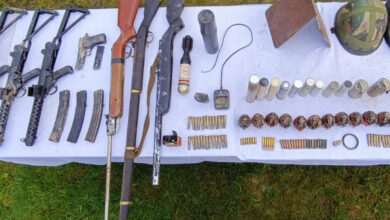India’s Progress Towards Indigenous Portable Air Defence Missiles

- The planned off-the-shelf buy and transfer of technology to Bharat Dynamics for production did not happen, leaving the Army severely lacking advanced man-portable air defense missiles.
- The most recent deal, which was made in May of last year, included 100 Igla-S missiles and 48 bases.
India is getting ready to start “user trials” for its own man-portable air defense rocket system, which is meant to kill enemy planes, drones, and helicopters at very close ranges. This development comes at a time when the armed forces are bringing in a small number of Russian weapons to fill in operational gaps in the ongoing military standoff with China in eastern Ladakh.
A senior defense official said that user trials for the domestic very short-range air defense system (VSHORADS), which was made by DRDO to stop low-altitude aerial threats within a 6-km range, should begin in April or May. The source said that the 4th generation VSHORADS is better than the current MANPADS in the Indian military because it has a cutting-edge uncooled imaging infrared seeker.
In January of last year, the defense sales council, which was led by Rajnath Singh, gave the go-ahead to buy VSHORADS missiles for Rs 1,920 crore. The VSHORADS has been tested in the upper range and has been shown to work well. It is now ready for important user trials before it might be mass-produced.
At the same time, Indian companies are looking into making “laser-beam riding VSHORADS” as part of the “Make-II” category project, which is paid for by the industry to build a prototype.
Even though tensions are high along the northern border with China, the armed forces see VSHORADS as a cheap and quick way to provide close air defense in rough high-altitude areas and the marine domain. An officer pointed out how useful and flexible they were in different situations by mentioning their success in the Russia-Ukraine war.
When VSHORADS was first bought, it was through a tri-Service case that started in June 2009. In the end, though, the Russian Igla-S anti-aircraft missile system won out over the French and Swedish ones. The planned off-the-shelf buy and transfer of technology to Bharat Dynamics for production did not happen, leaving the Army severely lacking advanced man-portable air defense missiles.
Over the past three years, the Army and IAF have bought Igla-S MANPADS on short notice as a temporary fix. The most recent deal, which was made in May of last year, included 100 Igla-S missiles and 48 bases. The Army and IAF have had the older Igla-1M weapons since 1989. The Igla-S version has a better range of up to 6 km for intercepting. A big step toward improving India’s air defense might be reached if the homegrown VSHORADS works well in user trials.







Facebook Comments